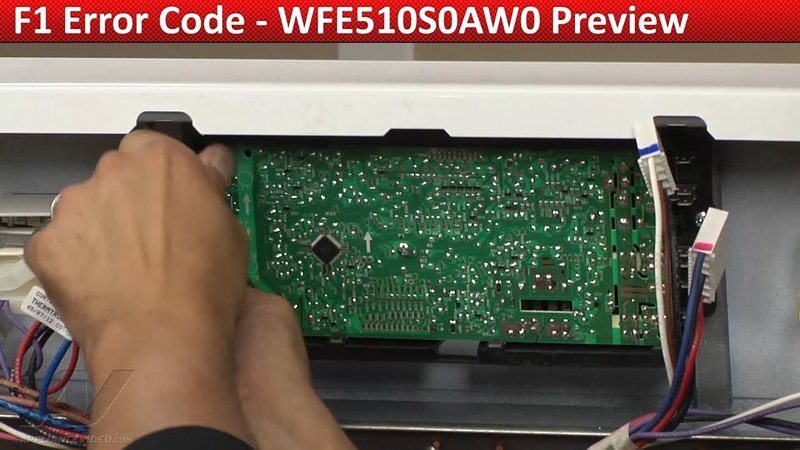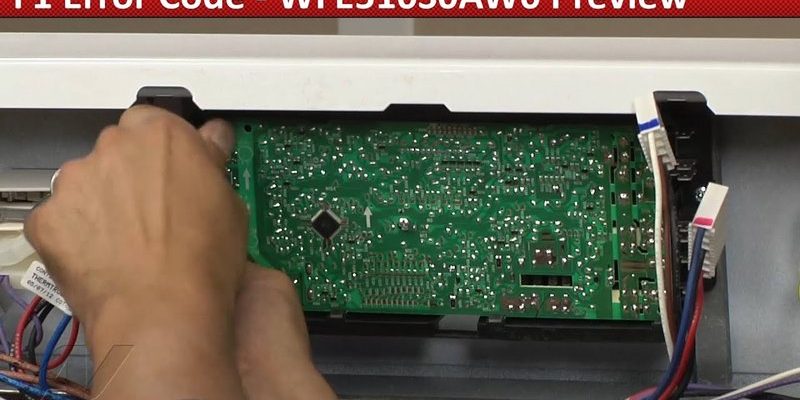
Error Code F1 on a Whirlpool microwave typically signals a problem related to the appliance’s internal communication system. This might sound complex, but in simpler terms, it means that the microwave’s “brain,” or control board, isn’t functioning as it should. Unlike human brains that get tired and need rest, appliance brains can sometimes get confused due to power surges, old age, or even a little dirt. So, the big question is, will turning it off and on again – the classic tech fix – solve the problem? Let’s find out!
Understanding Error Code F1
Error Code F1 might seem like a specialized term, but think of it as your microwave trying to talk to you. It’s like when your computer gives you an error message because something went wrong. The microwave has detected an issue and is alerting you, much like a smoke detector beeping to get your attention. This kind of error can stem from various causes, such as a short-circuit, a faulty keypad, or an aging control board.
When your microwave displays this error, it’s essentially telling you that it cannot perform its tasks properly. This might be due to a jumbled-up signal within its circuits similar to when our own thoughts get scrambled when overworked. These hiccups can arise from electrical anomalies, and sometimes, fixing it can be as simple as doing a hard reset. But other times, it might be a symptom of a bigger issue needing a closer look.
Realizing that not all errors are fixable by a quick reset is crucial. Although it’s tempting to hope for an easy solution, like restarting a sluggish phone, appliances sometimes need a bit more than just a refresh. Resetting could temporarily clear minor glitches, but deeper problems may require professional help.
How to Perform a Basic Reset
Now, let’s talk about the reset process. Resetting your microwave is akin to giving it a brief break – think of it as a power nap for your appliance. To do this, you usually need to temporarily cut off its power supply. Start by unplugging the microwave from the wall socket. If it’s hard-wired into your kitchen’s electrical system, you might need to flip the appropriate circuit breaker in your breaker box.
Once powered off, give the microwave a few minutes. This time allows any residual charge within its components to dissipate, effectively giving it a fresh start. After waiting, plug the microwave back in or flip the breaker switch on. With fingers crossed, power it on and check if the error persists.
If the Error Code F1 message doesn’t pop back up, congratulations! The reset might have cleared up the issue. However, this is not always the case. If resetting doesn’t help, or if the error returns after a short period, there might be an underlying problem that needs more than just a quick fix.
When and Why Resetting Isn’t Enough
Sometimes, resetting won’t fix the problem if there are deeper mechanical or electrical issues at play. Imagine trying to run a marathon with a pebble in your shoe. Sure, you can stop, shake it out, and continue, but if the pebble keeps reappearing, you might need new shoes. Similarly, a recurring F1 error could mean the control board is faulty or there’s a malfunctioning sensor within the appliance.
Persistent problems may indicate wear and tear that simply restarting can’t resolve. A faulty keypad, for instance, might cause the microwave to send error messages repeatedly. In such cases, replacing the keypad or control board might be necessary. Sometimes, wires could be loose or connections might have corroded, leading to signal miscommunications.
When a reset doesn’t suffice, consider seeking help from a qualified technician. They’ll have the right tools and knowledge to delve deeper into the appliance’s internals, identifying faulty parts or wiring issues that mere mortals like us might not even know existed inside a microwave.
Preventative Measures and Next Steps
To extend your microwave’s life and preempt F1 errors, consider taking some preventative measures. Like any electronic device, microwaves benefit from being kept clean and dry. Wipe down the keypad and control area regularly to prevent sticky deposits that can wreak havoc with sensor readings.
Minimizing exposure to power surges can also protect your microwave’s electronics. Using a surge protector is a smart move, especially if you live in an area prone to electrical spikes. Just like you wouldn’t want your computer zapped during a thunderstorm, your microwave deserves the same protection.
Ultimately, while resetting can be a quick and easy fix for minor hiccups, it’s not always a miracle cure. If problems persist, consider reaching out to Whirlpool customer support or a reliable appliance repair service. And always remember, sometimes the best solution involves a mix of quick fixes and professional insights.
By understanding and addressing these issues early on, you can keep your microwave humming along smoothly, ensuring it’s always ready to heat up your leftovers or popcorn without a hitch.
